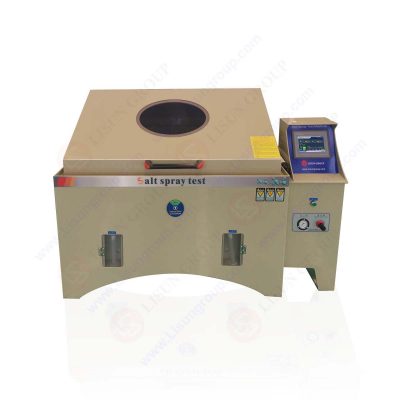
Overview
The salt spray test chamber is primarily used for conducting corrosion tests to ensure the quality of ferrous metals and their coatings. This test is widely used in the paint and coating industry to verify the durability and anti-corrosion properties of coatings. Corrosion significantly impacts ferrous metals, and the salt spray test chamber can simulate a saline environment to accelerate the corrosion process, thereby evaluating the corrosion resistance of materials and coatings.
Working Principle of Salt Spray Test Chamber
The salt spray test chamber accelerates the corrosion process by simulating a salt fog environment. The main principles are as follows:
• Salt Fog Generation: The test chamber has an internal spraying system that sprays a saline solution through nozzles, creating fine salt fog.
• Environmental Simulation: The temperature and humidity inside the test chamber are controllable, simulating saline conditions.
• Accelerated Corrosion: Through prolonged exposure to salt spray, the material surface quickly reacts with the chloride ions in the salt fog, accelerating the corrosion process.
Salt Spray Test Procedure
Sample Preparation:
• Fasteners: Items like bolts and nuts can be hung in the chamber using wires. Thin rods are used solely for hanging the samples.
• Metal Sheets or Plates: If the samples are flat, they can be fixed in the sample carrying area of the chamber at a specified angle.
Chamber Preparation:
• Place the samples inside the test chamber.
• Ensure the chamber is securely closed.
Parameter Settings:
• Temperature: Typically set around 35°C.
• Salt Fog Concentration: Commonly use a 5% NaCl solution.
• Test Duration: Set the test duration according to standards and requirements.
Starting the Test:
• Activate the salt spray system to ensure an even distribution of salt fog over the sample surface.
• Maintain the set temperature and humidity conditions to ensure a stable environment.
Test Monitoring:
• Regularly check the salt fog concentration and sample condition inside the test chamber.
• Ensure the parameters remain constant throughout the test.
Ending the Test:
• After the predetermined test duration, turn off the salt spray system.
• Open the chamber and remove the samples.
Results Analysis:
• Inspect the corrosion on the sample surfaces.
• Record the degree of corrosion, including the number, size, and distribution of corrosion spots.
• Compare the samples with standards to evaluate the corrosion resistance of the materials and coatings.
YWX/Q-010_Salt Spray Test Machine
Precautions
• Safety Operations: Wear protective equipment when operating the salt spray test chamber to avoid irritation from the salt fog to the skin and eyes.
• Equipment Maintenance: Regularly clean the interior of the test chamber to ensure the normal operation of the spraying and temperature control systems.
• Sample Handling: After the test, promptly clean the samples to avoid residual salt fog affecting subsequent analysis.
• Accurate Parameters: Strictly adhere to standard test parameters to ensure the accuracy and repeatability of the test results.
https://www.lisungroup.com/news/technology-news/working-principle-and-process-of-salt-spray-test-chamber.html


Comments
Post a Comment